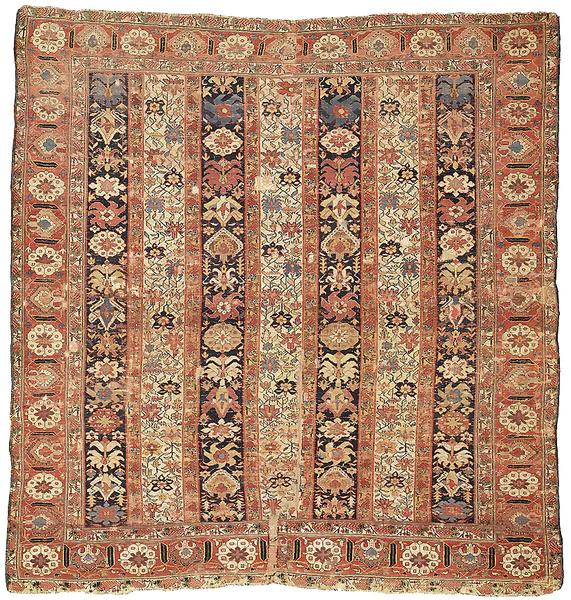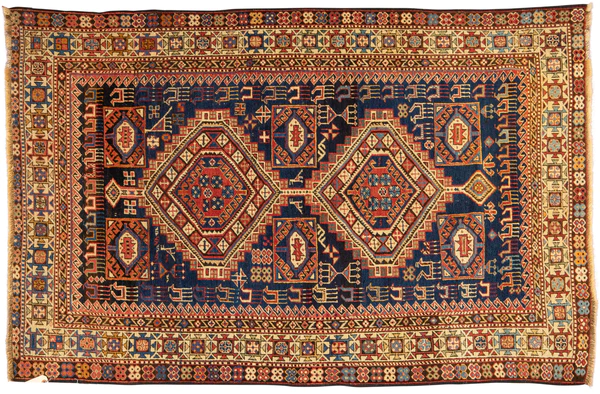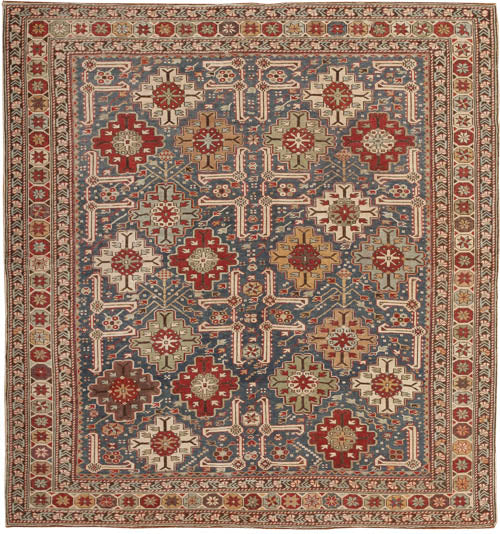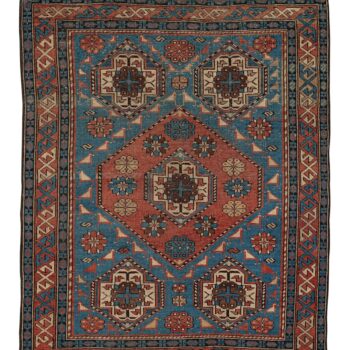Shirvan


Unfortunately, magnificent high-quality Shirvan are no longer produced. Its manufacture declined before the turn of the 20th century. The Transcaucasian railway opened up the region in the 1870s, creating an avenue for European traders to reach more easily. These traders brought enormous quantities of these rugs to hungry consumers of Caucasian art. Initially, due to increasing demand, artists began creating even more intricate designs, with extremely fine weaves and high knot counts. Demand, however, soon exceeded the weavers’ ability to produce the quantity desired by the trade. As a result, in the 1890s, carpet workshops began to replace individual artists’ studios. Commercial dyes replaced natural ones. The designs became simpler and more symmetrical. The simplest designs, although small, were excluded from the drawing. The loss of these motifs meant a lack of the individualism that marked these unique Shirvan rugs.
Shirvan rugs are often the most sought after antique rugs from the Caucasus. Interestingly, they are closely related in terms of design and coloring to Kuba rugs. But, Shirvan tend to be distinguished by a larger, more flexible weave. They also feature a medallion design, while the Kuba have designs that take up the entire central area of the rug. Still, Shirvan and Kubas rugs contrast with the bolder graphic design of South Caucasian rugs such as Kazak and Karabagh. They are more detailed, with precise articulations in shape as well as the visual effects produced by their richness of colors.
What draws attention to Shirvan rugs is their elegant and at the same time simple design. Medallions sprout from the deep blue background, for example, offering a striking visual graphic effect that is innovative and sophisticated. Each line of Shirvan rugs produces a certain effect. Every aspect of the design is in natural harmony with balance and symmetry.


Figalli Oriental Rugs
We do not sell rugs. We bring rare works of art to your home in the form of rugs.
Our services
You are Protected
Copyright © 2023 Figalli Oriental Rugs, All rights reserved. Desenvolvido por Agência DLB – Agência de Marketing Digital em Porto Alegre






